I am trying to connect from a net framework app to Azure App Configuration using a Managed Identity but have permission issues.
How I connect
options.Connect(new Uri("https://myconfigstore.azconfig.io"), new ManagedIdentityCredential(clientId));
I have tried all the various clientId, objectids and applicationId guids I can find using the portal but are always getting a bad request no matter when guid I call it with
Azure.Identity.CredentialUnavailableException: 'ManagedIdentityCredential authentication unavailable,
the requested identity has not been assigned to this resource.
Status: 400 (Bad Request)
If I create ManagedIdentityCredential without specifying an clientId I get this error
Azure.RequestFailedException: 'Service request failed.
Status: 403 (Forbidden)
I have granted my manage identity Azure App Configuration Data permission
Is this the clientId I should be using?
Update:
I have just tried to use the Id of my active directory (AAD --> Properties) and i get a
Azure.RequestFailedException: 'Service request failed.
Status: 403 (Forbidden)
That can only mean that I am using the wrong id because otherwise it should have returned 400 (Bad Request) like in the other error I see.
Full code
private static async Task Main()
{
var builder = new ConfigurationBuilder();
const string clientId = "e589d9f1-xxxx-xxxx-xxxx-6bc940d50ab7";
builder.AddAzureAppConfiguration(options =>
{
options.Connect(new Uri("https://myconfigstore.azconfig.io"), new ManagedIdentityCredential(clientId));
});
_configuration = builder.Build();
Console.WriteLine("Number of keys: " + _configuration.GetChildren().Count());
Console.WriteLine("Demo: " + _configuration["Demo"]);
}

